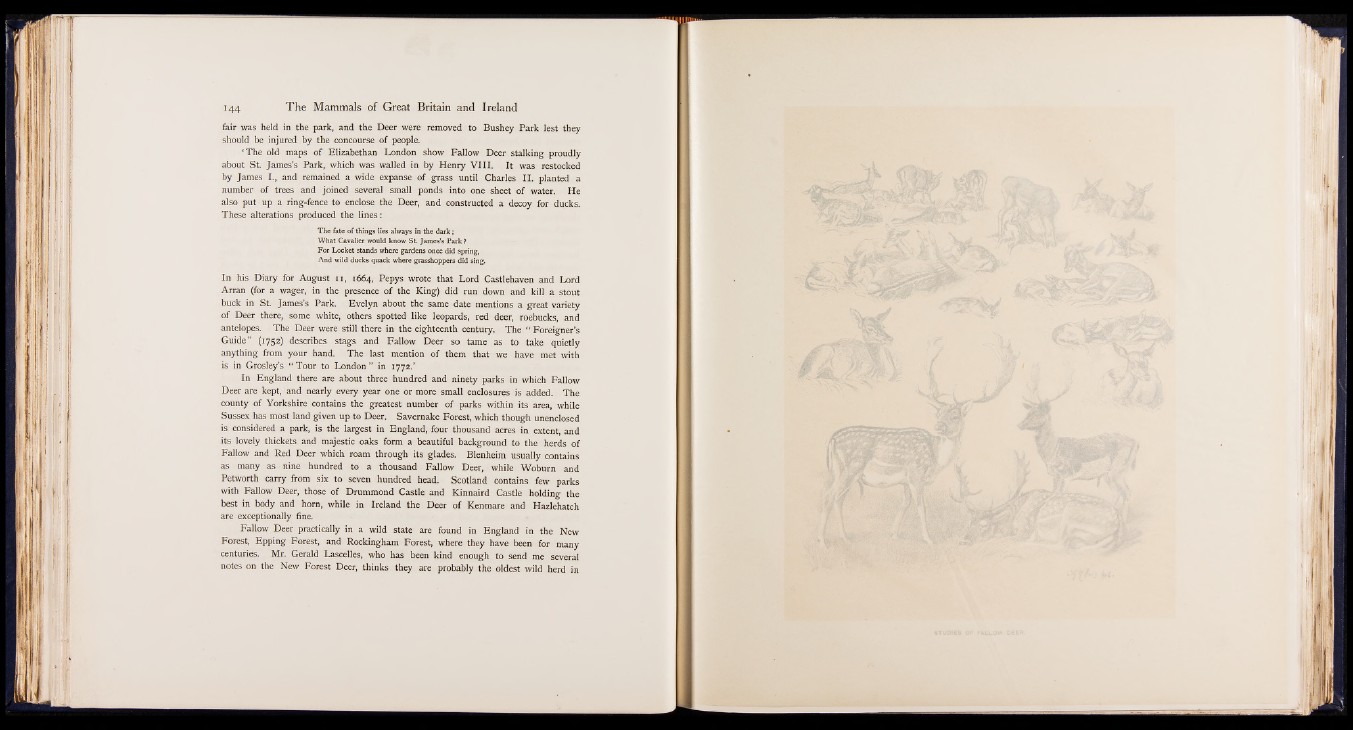
fair was held in the park, and the Deer were removed to Bushey Park lest they
should be injured by the concourse of people.
‘ The old maps of Elizabethan London show Fallow Deer stalking proudly
about St. James’s Park, which was walled in by Henry V III. It was restocked
by James I., and remained a wide expanse of grass until Charles II. planted a
number of trees and joined several small ponds into one sheet of water. He
also put up a ring-fence to enclose the Deer, and constructed a decoy for ducks.
These alterations produced the lines:
The fate of things lies always in the dark;
What Cavalier would know S t James’s Park ?
For Locket stands where gardens once did spring,
And wild ducks quack where grasshoppers did sing.
In his Diary for August n , 1664, Pepys wrote that Lord Castlehaven and Lord
Arran (for a wager, in the presence of the King) did run down and kill a stout
buck in St. James’s Park. Evelyn about the same date mentions a great variety
of Deer there, some white, others spotted like leopards, red deer, roebucks, and
antelopes. The Deer were still there in the eighteenth century. The “ Foreigner’s
Guide” (1752) describes stags and Fallow Deer so tame as to take quietly
anything from your hand. The last mention of them that we have met with
is in Grosley’s “ Tour to London” in 1772.’
In England there are about three hundred and ninety parks in which Fallow
Deer are kept, and nearly every year one or more small enclosures is added. The
county of Yorkshire contains the greatest number of parks within its area, while
Sussex has most land given up to Deer. Savernake Forest, which though unenclosed
is considered a park, is the largest in England, four thousand acres in extent, and
its lovely thickets and majestic oaks form a beautiful background to the herds of
Fallow and Red Deer which roam through its glades. Blenheim usually contains
as many as nine hundred to a thousand Fallow Deer, while Woburn and
Petworth carry from six to seven hundred head. Scotland contains few parks
with Fallow Deer, those of Drummond Castle and Kinnaird Castle holding the
best in body and horn, while in Ireland the Deer of Kenmare and Hazlehatch
are exceptionally fine.
Fallow Deer practically in a wild state are found in England in the New
Forest, Epping Forest, and Rockingham Forest, where they have been for many
centuries. Mr. Gerald Lascelles, who has been kind enough to send me several
notes on the New Forest Deer, thinks they are probably the oldest wild herd in